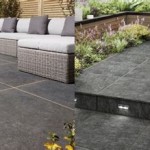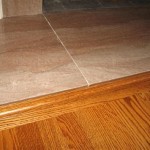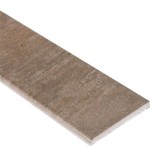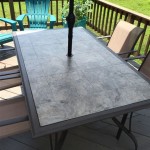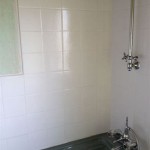Can You Lay Porcelain Tiles On Sand And Cement?
Porcelain tiles are a popular choice for flooring due to their durability, water resistance, and aesthetic appeal. However, the type of subfloor used for installation plays a crucial role in the longevity and performance of the tiles. One common question that arises is whether porcelain tiles can be laid directly on a sand and cement mixture. While the answer might seem straightforward, there are several factors to consider before proceeding with such an installation.
Understanding the Limitations of Sand and Cement
A mixture of sand and cement forms a base that can be used for various construction purposes, but it's not ideal for directly supporting porcelain tiles. Here's why:
1.
Lack of Structural Integrity:
Sand and cement alone lack the necessary structural integrity to support the weight of porcelain tiles, especially in areas with high foot traffic. Over time, the mixture may become unstable, leading to cracking and uneven settling of the tiles. 2.Moisture Absorption:
Sand and cement are porous materials, meaning they can absorb moisture. This can create problems with porcelain tiles, which are designed to be installed on a solid, dry surface. Moisture absorption can lead to the growth of mold and mildew and affect the adhesive bond between the tiles and the subfloor.3.
Uneven Surface:
Achieving a perfectly flat and level surface with a sand and cement mixture is challenging. Any irregularities in the base will be reflected in the finished tile installation, resulting in an uneven and visually unappealing floor.Alternatives for Laying Porcelain Tiles
While directly laying porcelain tiles on sand and cement is not recommended, there are alternative approaches that offer a more stable and durable foundation. Here are some options:
1.
Concrete Slab:
A concrete slab, poured directly onto the ground or over a compacted gravel base, provides a solid and level surface for tile installations. Concrete offers excellent structural support and resists moisture penetration. 2.Backer Board:
Cement board, also known as backer board, serves as an effective moisture-resistant layer and provides a smoother surface for tile installation. It's typically installed over a plywood subfloor or a concrete slab. 3.Mortar Bed:
A mortar bed consists of a layer of mortar applied over a plywood subfloor. This method helps to level the surface and create a secure base for tile installation. However, a mortar bed can be more labor-intensive compared to other options.Factors to Consider Before Choosing a Subfloor
The best subfloor for your porcelain tile installation depends on several factors, including:
1.
Location:
The location of the tile installation will influence the choice of subfloor. For example, outdoor areas might require a more robust base that can withstand weather elements. 2.Traffic Level:
The expected traffic level in the area will determine the necessary strength and rigidity of the subfloor. High-traffic areas need a more durable base to prevent cracking and movement. 3.Budget:
Different subfloor options come with varying costs. Consider your budget and choose a solution that delivers the necessary performance within your financial constraints. 4.Professional Expertise:
Consulting with an experienced tile installer is essential to determine the most appropriate subfloor for your project. Their expertise can ensure a successful and long-lasting tile installation.Conclusion
In conclusion, while laying porcelain tiles directly on sand and cement is not recommended due to concerns about structural integrity, moisture absorption, and uneven surfaces, alternative subfloor solutions such as concrete slabs, backer boards, or mortar beds offer better support and durability. Carefully considering factors like location, traffic level, budget, and professional advice will help you select the most suitable subfloor for your porcelain tile installation.

Why You Shouldn T Fix External Porcelain Tiles Into A Wet Bed Htw Ltd
%202022-1.jpg?strip=all)
How To Lay Porcelain Patio Paving Pavestone Natural Stone For Gardens And Driveways

Sand Set Pavers For Driveways Porcelain Paver Center

Our Guide On How To Lay Porcelain Paving Forest Stone
%202022-6_2.jpg?strip=all)
How To Lay Porcelain Patio Paving Pavestone Natural Stone For Gardens And Driveways

Laying Porcelain Tiles Outside Tools And Best Practices

Porcelain Patio From Start To Finish

A Guide To Laying Porcelain Paving All Your Need Know

Dry Laying Slabs On Gravel Or Sand Instruction Kronos Ceramiche Floor Coverings In Porcelain Stoneware

How To Lay Pavers On Sand Or Dirt Premier Stone
Related Posts

